If you are planning a tiling job, its likely you’ll come across points in your project where you’ll need to cut your tile to fit along walls, around corners or household fixtures and appliances. Therefore, it’s essential to know how to tile and for this you will need to use a tile cutter.
Knowing how to properly use a tile cutter is essential. It will help you achieve clean, straight edges and get professional results rather than rough, ragged cuts that will draw attention and leave you with a visually unpleasant look.
When thinking about how to use a tile cutter, there are two types of machines you can purchase; a manual tile cutter and an electric cutter or ‘wet saw’. The type of material and the sizes of tiles you’re working with, will affect which tile cutter you go for.
Types of Tile Cutters
Electric Cutters
Electric cutters are typically used for natural stone tiles such as marble or limestone, as well as more extreme tiles such as 20mm porcelain.
With a diamond blade, electric cutters can cut through the hardest forms of tile. With electric tile cutters, you can set the blade at an angle. This allows you to make mitre cuts to your tiles for external corners and joinery.
When it comes to electric cutters, the first thing to know is how the machines are labelled. Each cutter will have a first and second set of numbers, for example the DC-250 1200 cutter.
The First set of numbers refers to the blade size needed for this machine. The second set of numbers refers to the length of tile (in mm) you can cut on this machine.
Electric Cutter ND-200
The ND-200 is a lightweight cutter with a 1.1hp motor powered saw.
This machine can be used for most tile sizes, as long as the user keeps the tile straight. It should not be used to cut 20mm tiles.
We recommend using a tile size you are both comfortable managing and confident you can ensure a straight cut on.
DU-200 EVO Electric Cutter
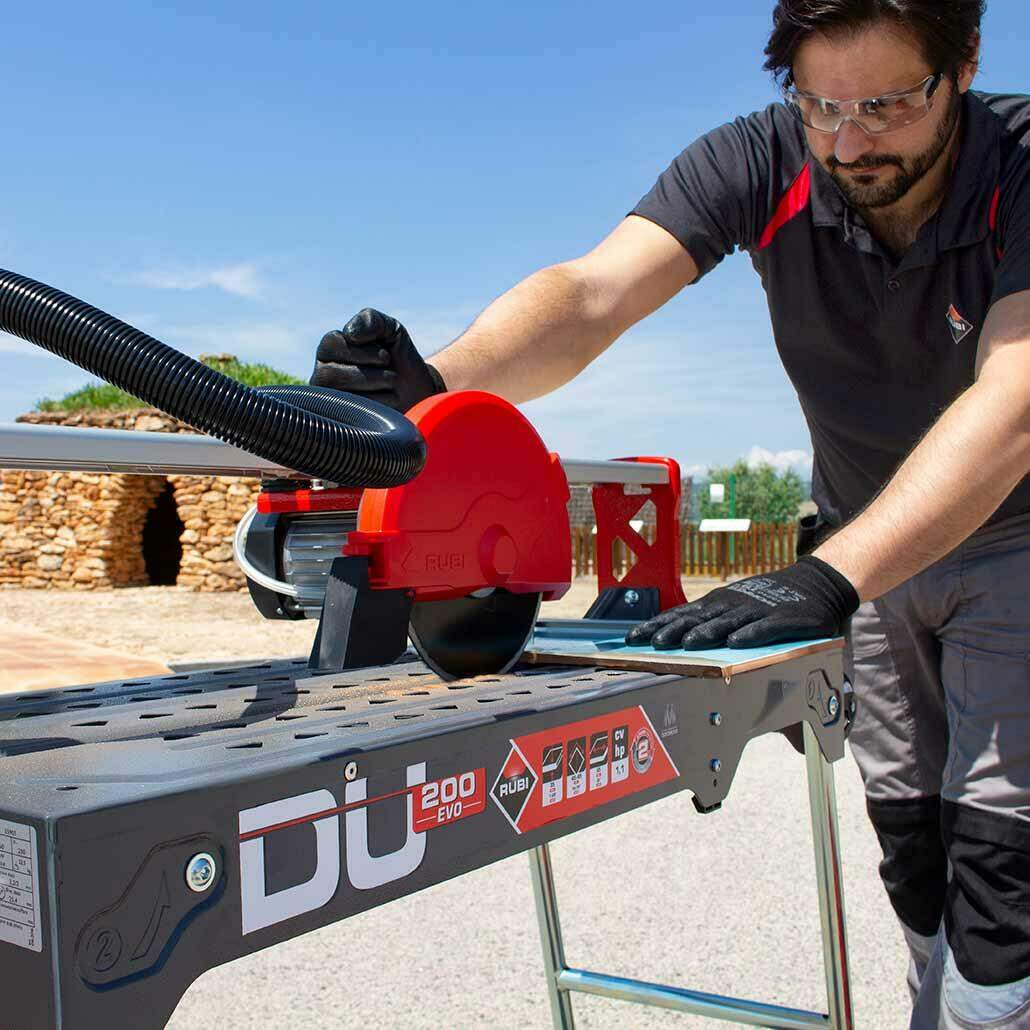
Our DU-200 Evo electric cutter is engineered with a bridge saw to enhance ease of cutting straight lines when working with large-format tiles. This saw is ideal for lighter tasks, offering the convenience of an electric cutter for occasional projects.
If you need a machine for regular use or for larger projects, select a bigger one with higher horsepower for more heavy duty use, such as the DV-200. It is not recommended for 20mm thick porcelain.
DV-200 Electric Cutter
The DV-200 cutter has a 1.5hp motor and is ideal for intensive cutting and regular, everyday use.
This machine comes with a coated steel chassis to help prevent rust and a water pump with flow control. This allows you to keep the blade cool while cutting. This helps the blade last longer and dramatically reduces the amount of dust produced when making cuts.
Due to its size, it can cut up to 1m tile. It also has removable aluminum bed plates, making it much easier to clean after each use. It is not recommended for 20mm thick porcelain.
DR-350 Electric Cutter
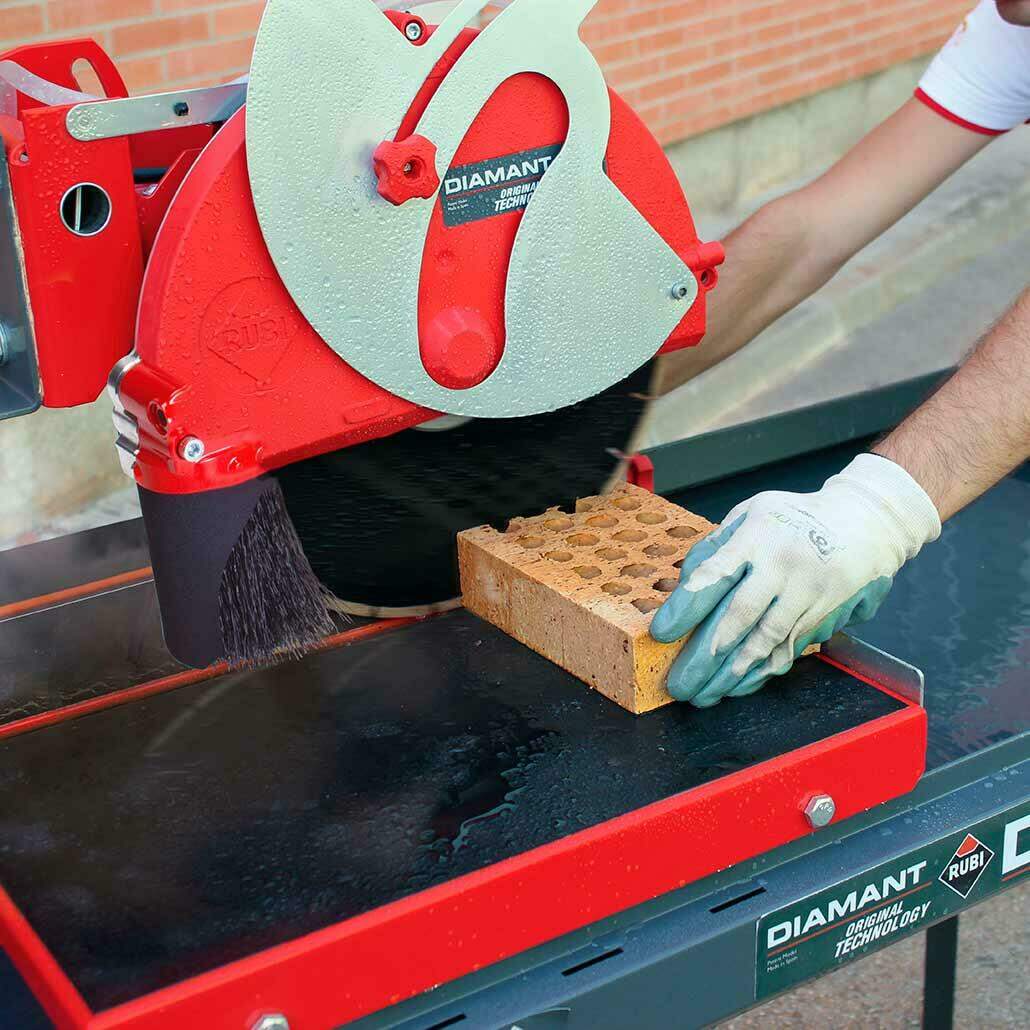
If you require a machine with greater horsepower that will be used regularly to cut building materials, look no further than the DR-350.
This cutter has 3hp direct drive motor and is built with a plunge cut, allowing for greater cutting height.
The plunge cut feature enables you to cut up to 150mm tile. The machine is designed to cut all types of building material such as masonry bricks, marble, and granite.
DC-250 Electric Cutter
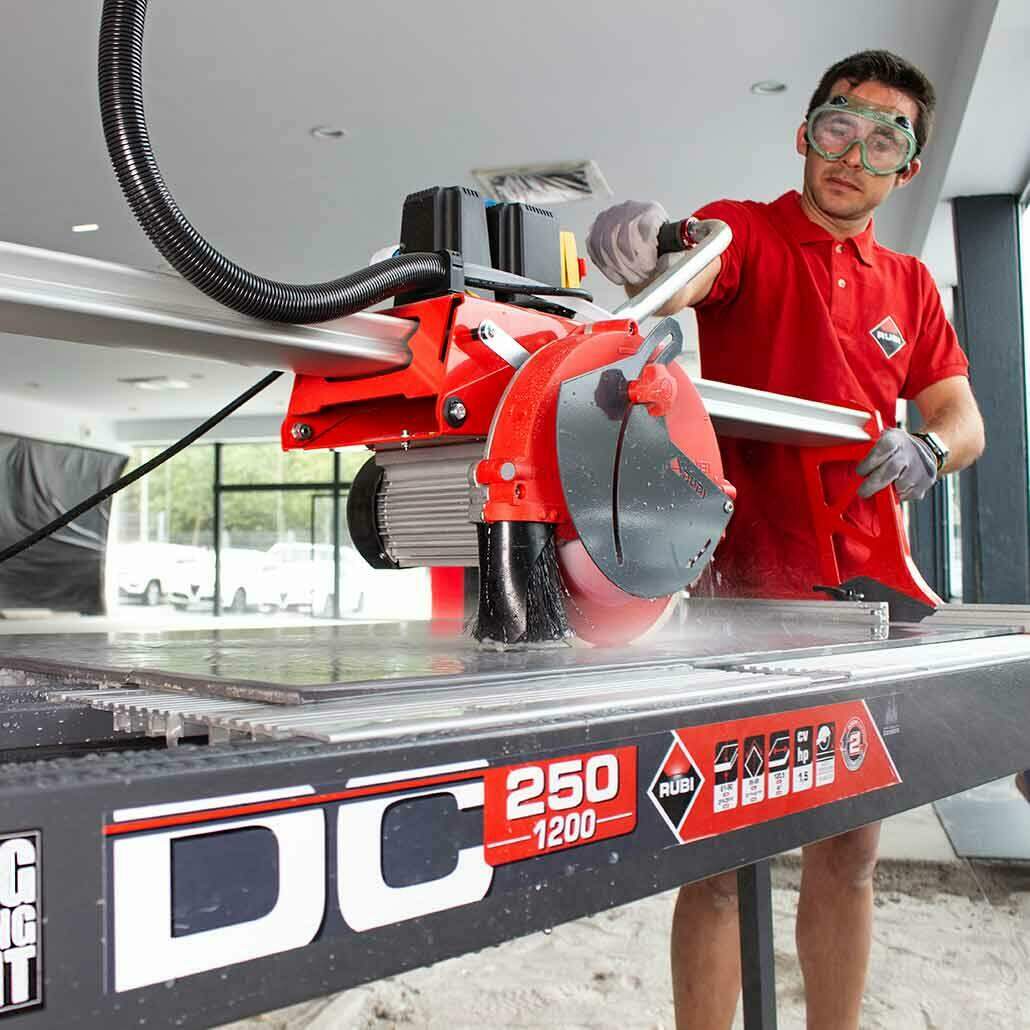
The DC-250 is the perfect machine to cut 20mm thick porcelain tiles. Its plunge capability enables you to cut even thicker tiles. The DC-250 features a powerful 1.5hp motor and includes a water pump with flow control to keep the blade cool.
The cutter also comes with a Zero Dust feature, which reduces the amount of breathable dust particles, providing a cleaner and safer working environment.
DS-250 Laser & Level Electric Cutter
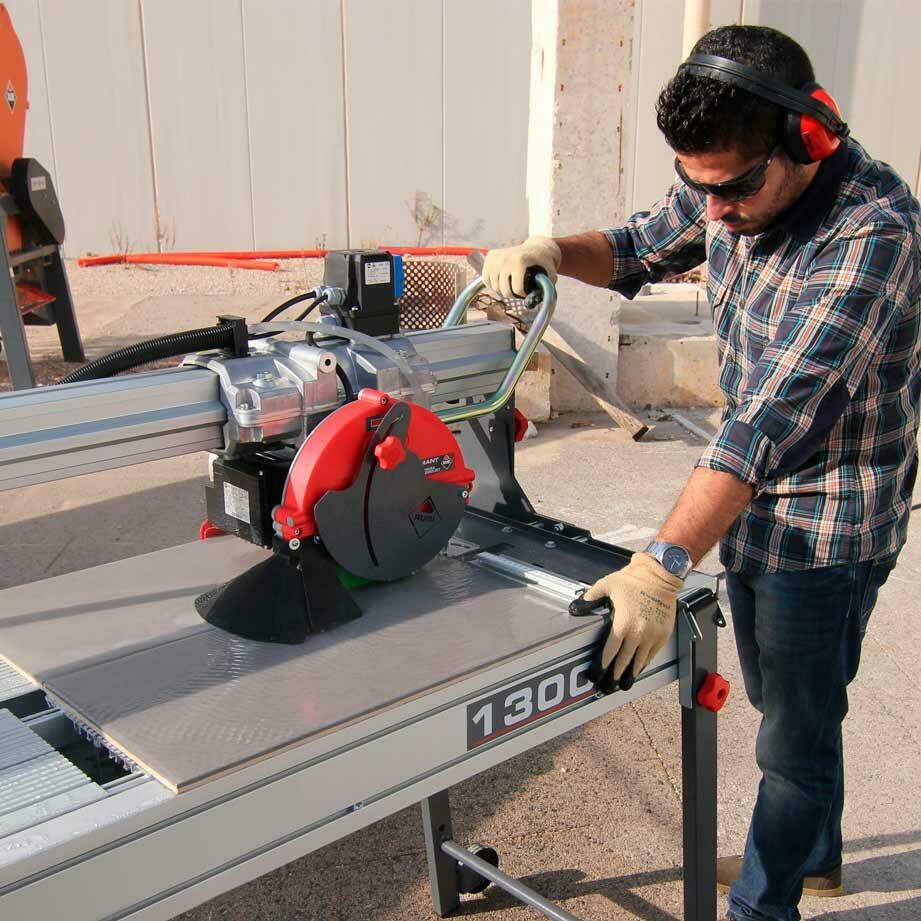
Another machine that has the Zero Dust feature is the DS-250 Laser & Level electric cutter. This machine is built for larger industrial sized projects. It has a 3hp motor and can also be used to cut 20mm tile. It is sold with the RUBI SPT blade which will allow you to cut this thickness.
As this machine doesn’t have plunge cut built in, using an alternative blade may significantly reduce the blade’s lifespan. A distinctive feature of this cutter is its retractable legs with a shield function. These provide a safer storage option for your machine.
DCX-250 Electric Cutter
Lastly, the new RUBI DCX-250 is our latest electric cutter. With a 2hp motor, this machine is suitable for intensive cutting on porcelain, stoneware, and ceramic tile as well. It is also capable of cutting natural stone materials such as marble or granite.
This machine includes off-road type reinforced wheels for greater ease when transporting and handling. It also comes with a removable water tank for easy use and refill. This tank has a 30L capacity.
Not only does the DCX-250 have an improved splash guard, but it also comes with a new adjustable cooling system. This increases the blades cooling efficiency and reduces water dispersion when cutting tile.

Manual Tile Cutters
Manual tile cutters are an essential piece of equipment that everyone should have in their toolbox. They are used for cutting standard ceramic and porcelain tiles.
This is done by running the scoring wheel, which is positioned beneath the bar along your measured tile, to create a score. Then, using the breaker, apply pressure along the scored line to snap the tile.
Key Benefits
There are many benefits to using a manual tile cutter. Manual tile cutters are generally cheaper and a lot easier to setup and use than electric cutters. Due to their size (even with larger versions), manual cutters are a lot more portable, which makes them more efficient for regular use.
Due to their design and ease of use, professionals are also able to cut tile at a much faster rate with a manual cutter than with an electric cutter.
When it comes to cutting tile, some harder materials such as porcelain tiles can be difficult to score and cut.
Often it may take a little more time and effort to score the tile and apply pressure repeatedly along the scored line to efficiently cut the tile and not cause it to snap off the scored line. In cases like these, it is recommended to use an extreme or endure scoring wheel, which will allow you to cut deeper into the surface of the tile.
This facilitates an easier and more accurate cut and make it easier to snap the tile. With certain tiles, such as ceramic or glazed, a harder or deeper score can cause damage to the delicate glaze on the tile.
So for this, we would recommend using a 6mm or 8mm scoring wheel to make a lighter score.
Best Practices and Methods
To begin, mark the tile at the desired cutting point. Flip the tile over and align it between the fixed tile and the gap you aim to fill. Use a pencil to mark the top and bottom edges, and extend these marks onto the tile. This marked line will guide your cutting.
Remember, before you cut your tile it’s important to take into consideration the grout joint you will need. Place your tile onto your cutter and score it. Then using the breaker mechanism on your machine, snap it.
Depending on which RUBI manual cutter you have, your breaker mechanism may be set up differently.
Large Format Tiles
Large format tiles come in a wide variety of different designs and colours, making them suitable for a range of different designs and aesthetics. They are generally square or rectangular tiles measuring around 30 x 30. However, this measurement is regularly changing as the popularity of large format tiles continues to grow.
Slim System Cutter
The SLIM SYSTEM CUTTER is a manual cutter specifically designed to regularly cut large format tiles.
This system is made up of aluminum guides, suction cups, an extreme scoring wheel roller guide, and breaking pliers. The guide is fixed in place by the suction cups.
When setting your guide, always set it 10mm from the edge of the guide itself, accounting for the gap between the guide and the scoring wheel. Using aluminum guides ensures a precise and straight score, eliminating any deviations.
Once the tile is scored, the breaking pliers are used to gradually separate the tile from the scored line, reducing the risk of breakage.
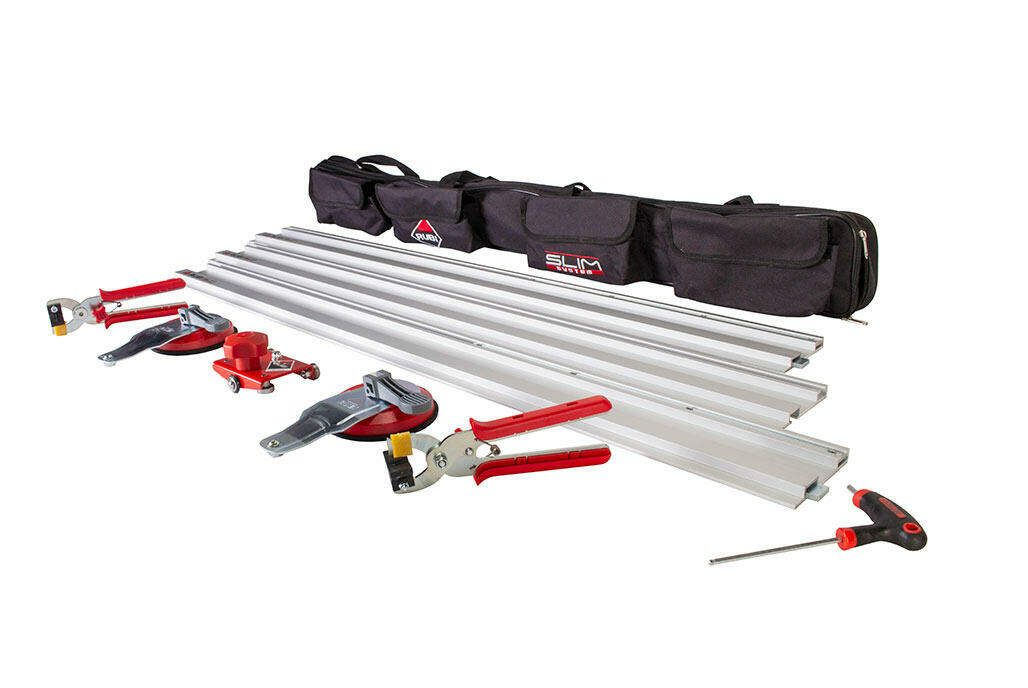
TC-125 Circular Saw
For additional support in cutting large format tiles, we suggest the TC-125 Circular Saw as an alternative to the manual cutting options
To correctly operate the TC-125, it is NECESSARY to use the SLIM cutting guides. Using the aluminium guide system will enable you to obtain a precise and smooth cut.
The TC-125 circular cutter also has a double dust reduction system. This lets you control the dust generated during the cut, thanks to its connection with a vacuum cleaner (dry cut) or through the water inlet (wet cut).
The head of the TC-125 is also adjustable up to 45-degrees, allowing you to perform mitre cuts. The TC-125 includes an additional handle that increases control and visibility while performing these cuts, thus improving the ergonomics of the job.
TS-MAX Manual Cutter
On our TS Max cutter range, the breaker has been designed as a single point breaker with separate lever action.
Once you have scored your tile, use the lever to apply pressure to snap the tile.
This breaker includes SMART POWER, which regulates the breaking pressure depending on the thickness of the tile. It can apply a maximum of 800 kg of pressure to materials of greater thickness.
TR Magnet and Speed Magnet Manual Cutters
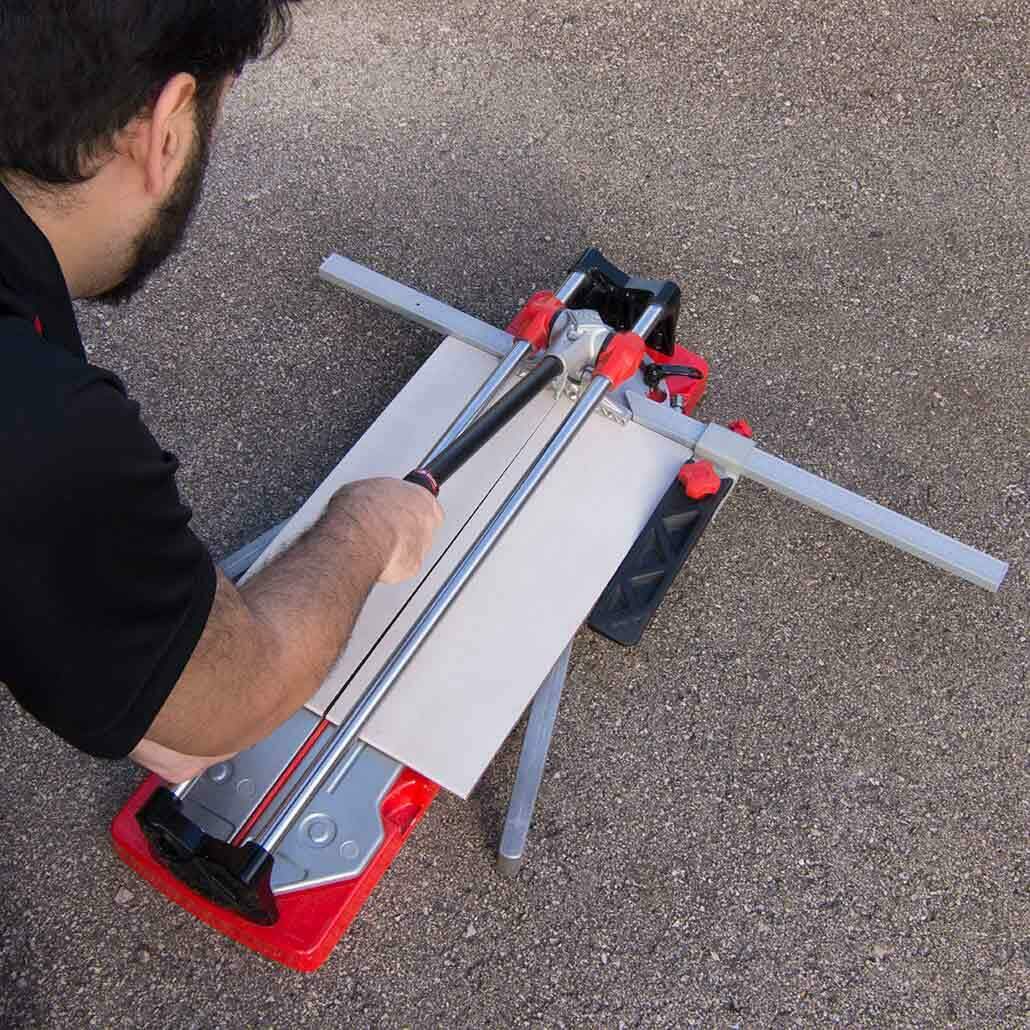
The TR Magnet and Speed Magnet systems lock the breaker away from the tile, providing greater visibility and efficiency for the user when scoring the tile.
By simply moving the lever upwards, you can set the multi-point breaker and apply up to 800 kg of breaking power to obtain a clean and precise cut.
TX-MAX Manual Cutter
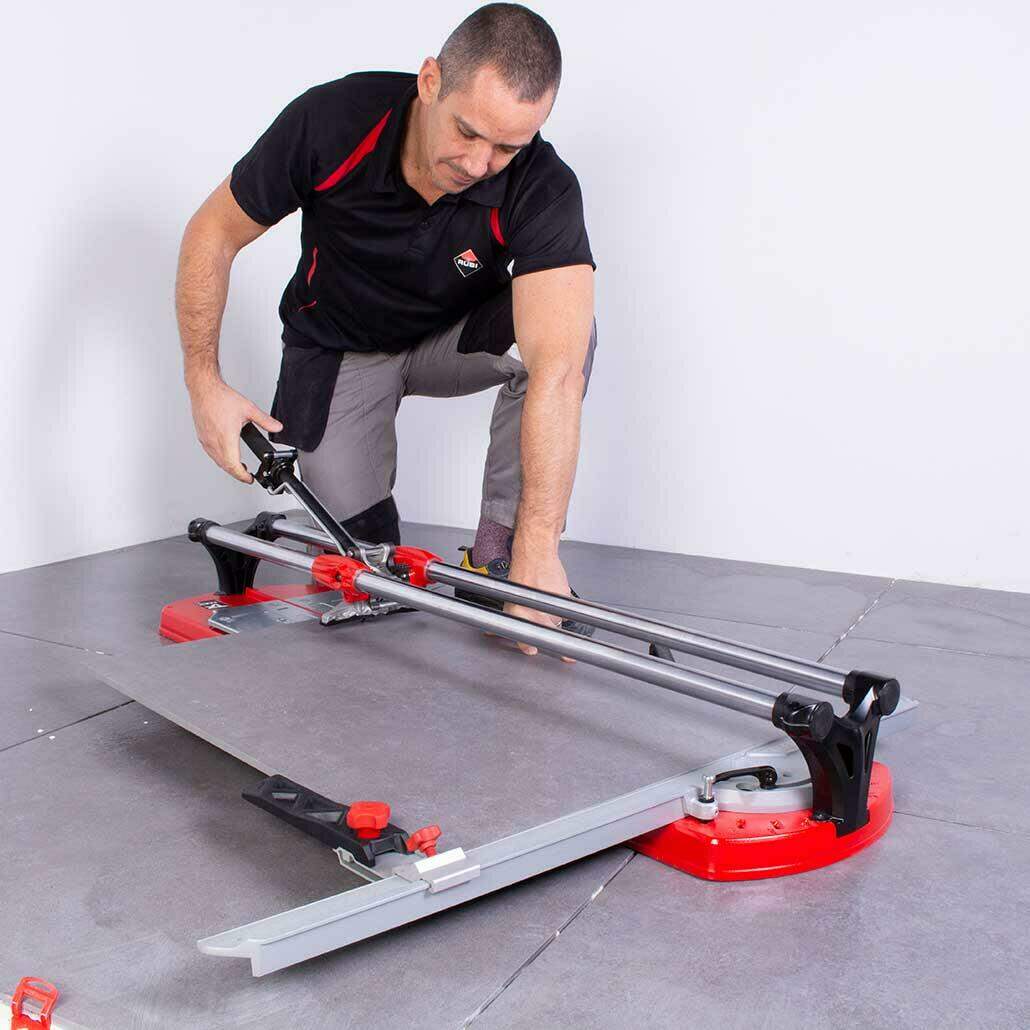
The TX-Max has a unique separator mechanism design, which enables use it with just one hand.
With a locking and unlocking multi-point breaking system by trigger, it increases the breaking pressure and performance, both in low and high thickness materials (from 3 to 21mm).
TZ Manual Cutter

The TZ manual cutter is our largest manual tile cutter with 1500 kg of maximum breaking power.
Our TZ models have an exclusive and patented breaker mechanism and a patented 30 cm long lateral stop offers a large surface for performing repetitive cuts on large format tiles.
In conclusion, manual tile cutters will enable you to make great, efficient cuts with minimal effort. They are easy to use and require little experience to successfully operate. Electric cutters allow you to regularly cut natural stone and more heavy duty tiles, straight and at an angle with ease.
Consider the nature of your projects and the materials you frequently work with when selecting a machine. If you regularly handle both standard tiles and more challenging materials, it might be advisable to invest in both a manual and an electric cutter.

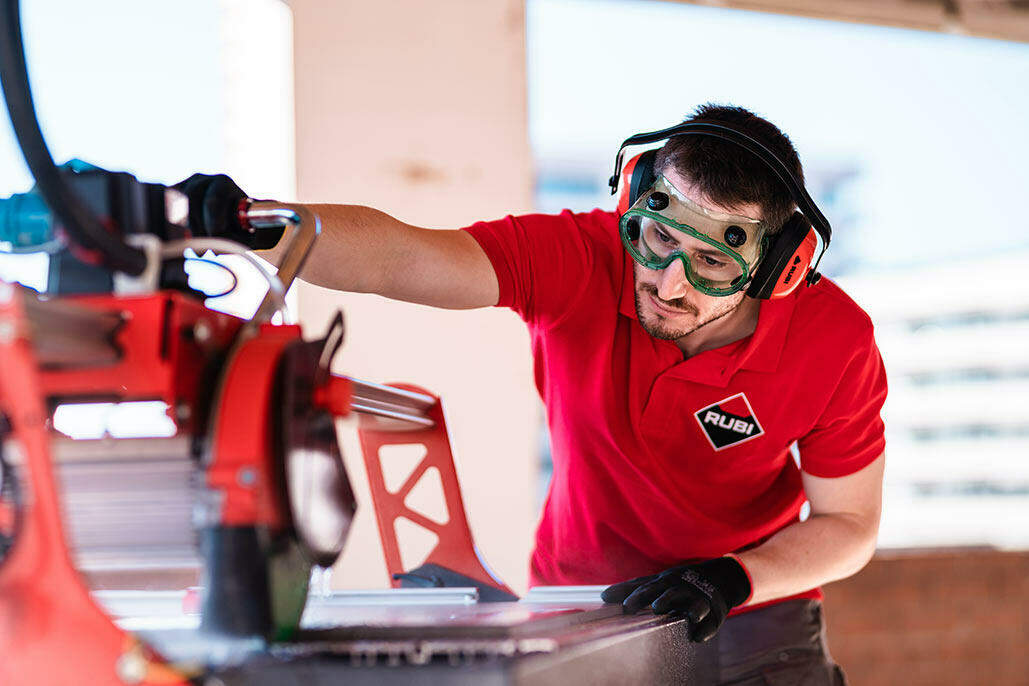

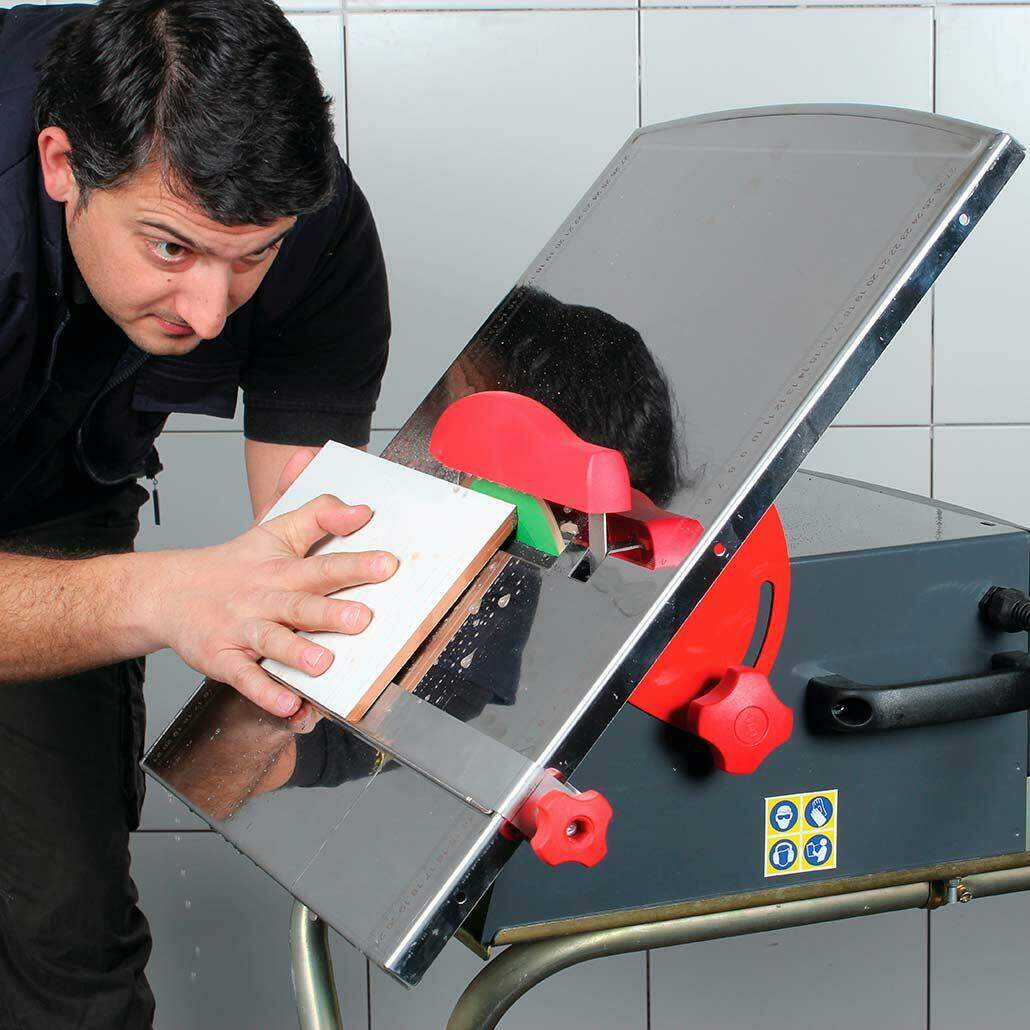
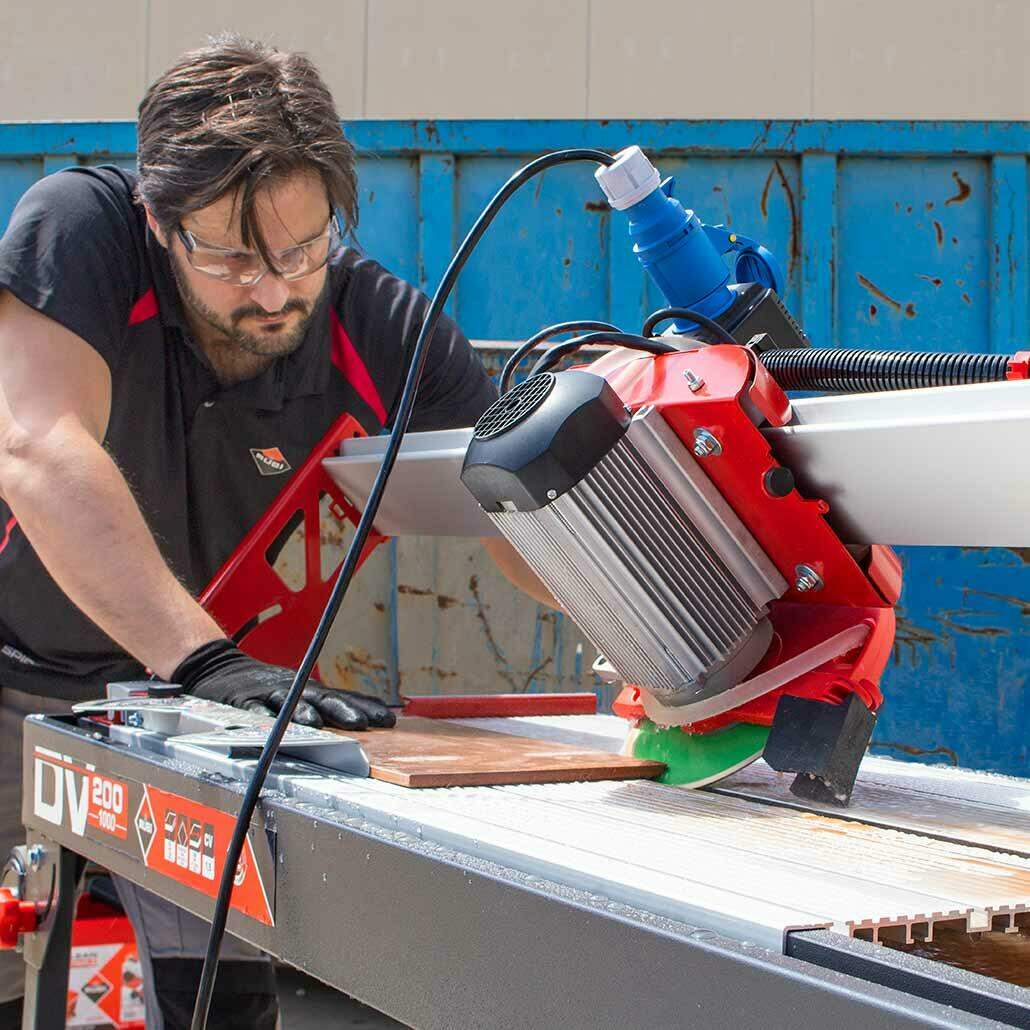

Post a comment